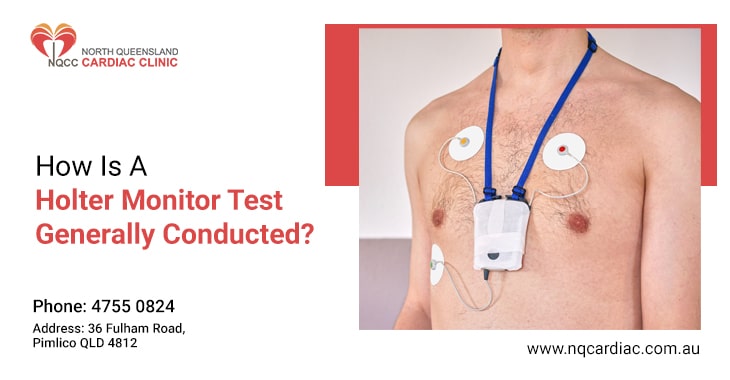A Holter Monitor test is a non-invasive diagnostic tool used to monitor and record the heart’s electrical activity over an extended period. The test is crucial in detecting irregular heart rhythms, evaluating symptoms like palpitations, and assessing the effectiveness of treatments for cardiac conditions. At North Queensland Cardiac Clinic, the Best Holter Monitor Test Clinic in Pimlico, we strive to provide patients with the best care and accurate diagnosis through this procedure. We also guarantee the Best Holter Monitor Cost in Pimlico. This blog will explore the general process of conducting a Holter monitor test to destress you before the procedure.
- Understanding the Holter Monitor Test
- Preparation for the Test
- Application of the Holter Monitor
- During the Monitoring Period
- Returning the Holter Monitor
- Data Analysis and Diagnosis
Understanding the Holter Monitor Test:
The Holter Monitor is a small, portable device with electrodes attached to the chest. It records the heart’s electrical signals, known as electrocardiograms (ECGs or EKGs), continuously for 24 to 48 hours, or even longer in some cases. Skilled cardiac technicians and physicians later analyze the data collected during this period to identify abnormalities or irregularities in the heart’s rhythm.
Preparation for the Test:
Before the Best Holter Monitor Test, patients are advised to shower and avoid using lotions or oils on their chest, as it helps ensure proper electrode adhesion. They are also encouraged to wear loose-fitting clothing to facilitate the attachment of the monitor comfortably. Patients should inform their healthcare provider about any medications they are taking and any pre-existing medical conditions.
Application of the Holter Monitor:
Upon arriving at North Queensland Cardiac Clinic, patients will be greeted by our experienced staff, who will explain the entire procedure in detail and address any concerns they might have. Furthermore, a trained technician or nurse will apply the monitoring device. Small, adhesive electrodes will be strategically placed on the chest, and the leads will be connected to the Holter monitor.
During the Monitoring Period:
Once the Holter monitor is properly attached, patients will be instructed to maintain a diary. This diary includes their everyday activities during the monitoring period. It is crucial to note any symptoms experienced, such as dizziness, chest pain, palpitations, or shortness of breath, along with the corresponding time in the diary. In addition, this information will help correlate any irregularities with the patient’s daily activities.
Returning the Holter Monitor:
At the end of the monitoring period, usually after 24 to 48 hours, patients will return to North Queensland Cardiac Clinic to have the Holter monitor removed. Our expert team of cardiologists and technicians will carefully analyze the data recorded by the monitor.
Data Analysis and Diagnosis:
The data obtained from the Holter monitor is meticulously analyzed to identify any irregularities or abnormal heart rhythms. Our team uses advanced software to review and compare the recorded ECGs with the patient’s activity diary. This analysis aids in identifying potential triggers for symptoms and evaluating ongoing treatments’ effectiveness. All this at minimum and Best Holter Monitor Cost.
Bottom Line
The Holter Monitor test plays a vital role in diagnosing and managing various cardiac conditions. It provides valuable information about the heart’s electrical activity over an extended period. At North Queensland Cardiac Clinic, the Best Holter Monitor Test Clinic in Pimlico, we are committed to utilizing advanced technology and expertise to deliver exceptional patient care. Visit us for the Best Holter Monitor Cost that won’t break the bank.


